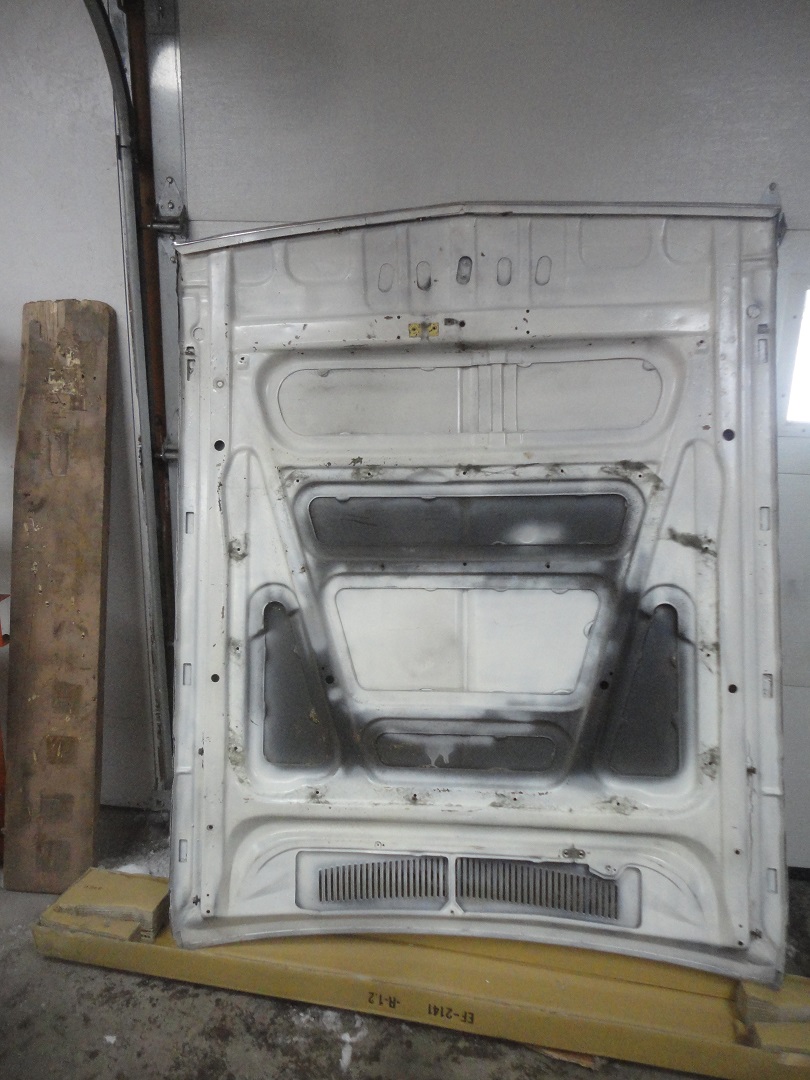 187) Here's the hood a got off from E-bay. It is a correct early 1970 Hood without crumple zones. I paid $228 for the hood and $162 to have it shipped from Florida to Vermont. The body shop that I got it from converted a 1970 to a performance hood. So they shipped me the old hood in the packaging the performance hood came in. I had it shipped FedEX Freight. I was suprised to find an original set of early 1970 hood hinges in the box when I got it. My original ones where bent. Early hoods not only had no crumple zones, but also used 5/16" bolts to mount them to the hinges.
187) Here's the hood a got off from E-bay. It is a correct early 1970 Hood without crumple zones. I paid $228 for the hood and $162 to have it shipped from Florida to Vermont. The body shop that I got it from converted a 1970 to a performance hood. So they shipped me the old hood in the packaging the performance hood came in. I had it shipped FedEX Freight. I was suprised to find an original set of early 1970 hood hinges in the box when I got it. My original ones where bent. Early hoods not only had no crumple zones, but also used 5/16" bolts to mount them to the hinges.
|
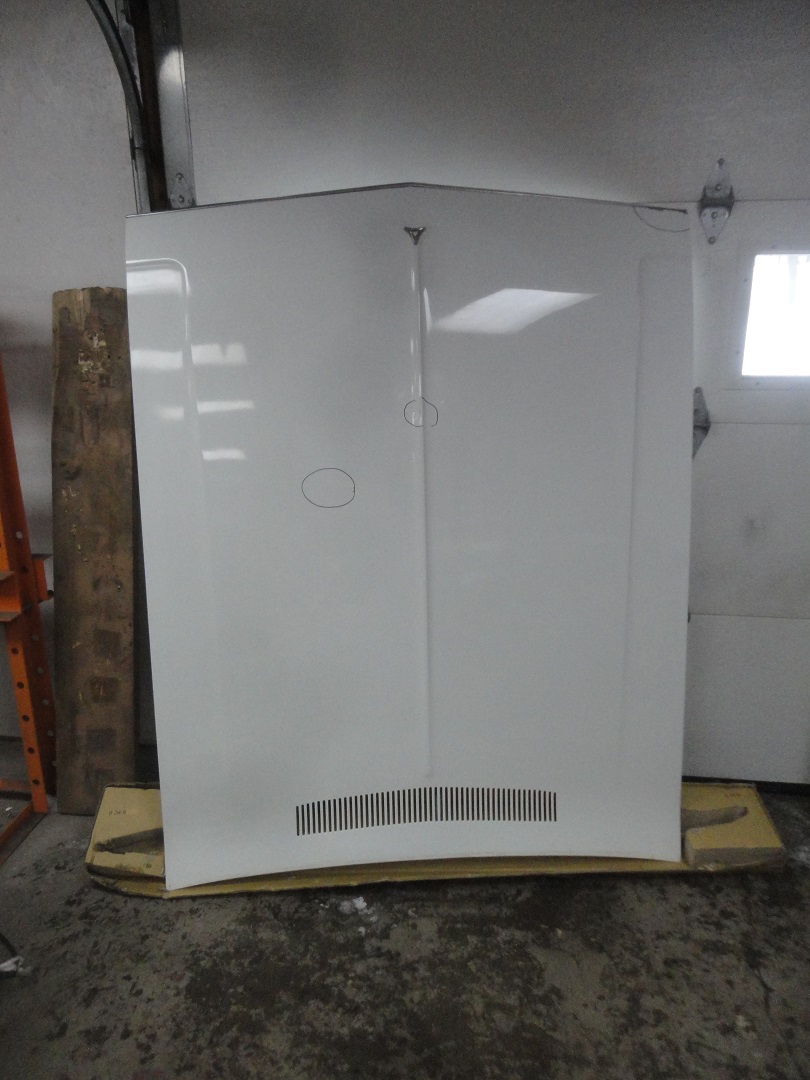 188) One negative was that the hood hinges were loose in the box, which resulted in a couple small dings in the hood which I had to fix. Considering what I paid for the hood, I was not too upset.
188) One negative was that the hood hinges were loose in the box, which resulted in a couple small dings in the hood which I had to fix. Considering what I paid for the hood, I was not too upset.
|
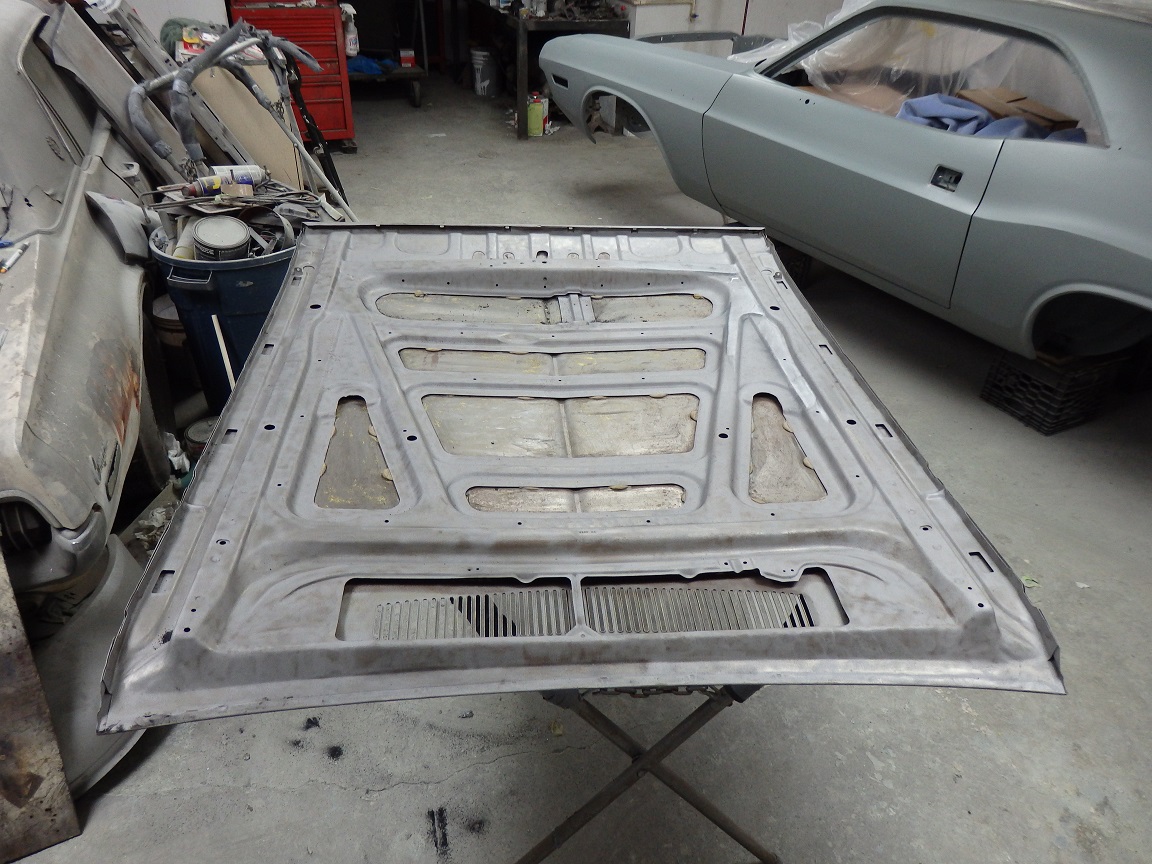 189) On the underside of the hood I masked and sandblasted the inner frame. But for the underside of the outer skin I had to chemically strip to prevent warping due to the sandblaster. I use Aircraft Paint Stripper as my prefered stripper.
189) On the underside of the hood I masked and sandblasted the inner frame. But for the underside of the outer skin I had to chemically strip to prevent warping due to the sandblaster. I use Aircraft Paint Stripper as my prefered stripper.
|
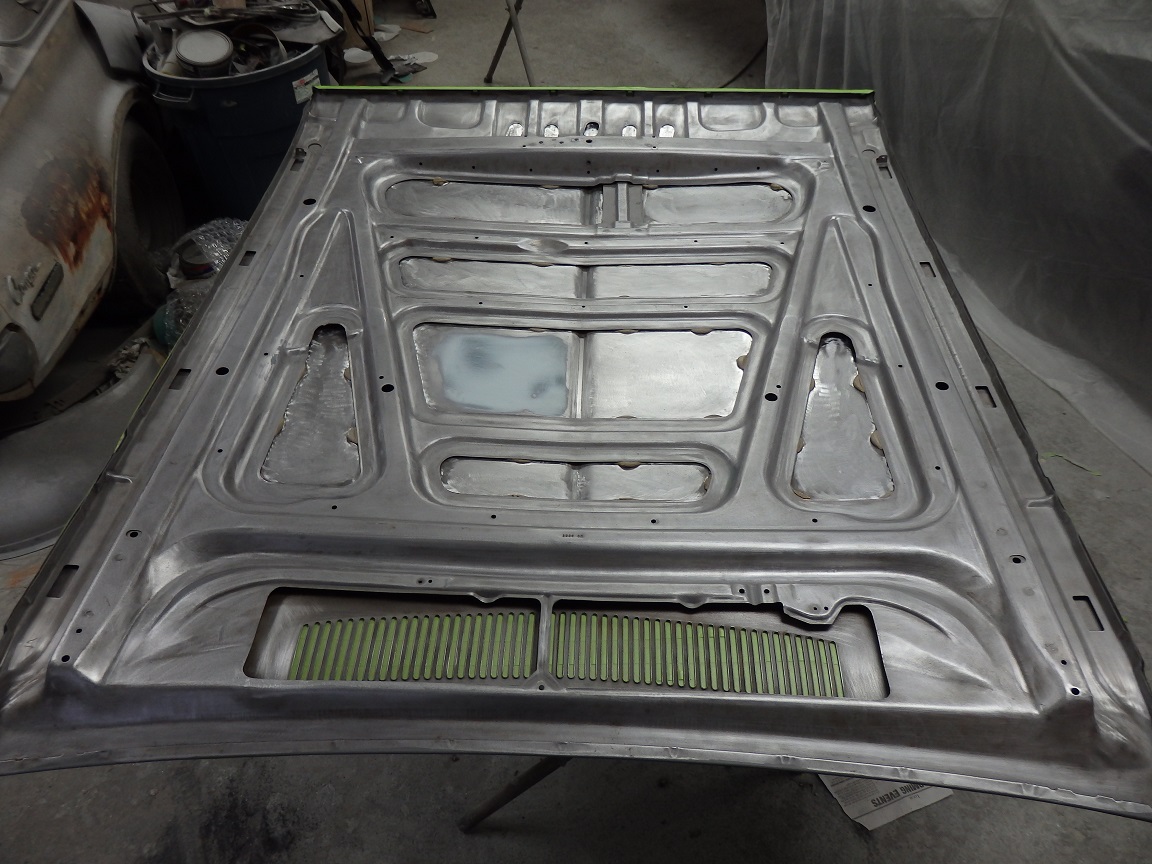 190) I then sanded the underside and fixed and dressed the underside of a repair. I had to feather ir out a lot to hide the small buldge.
190) I then sanded the underside and fixed and dressed the underside of a repair. I had to feather ir out a lot to hide the small buldge.
|
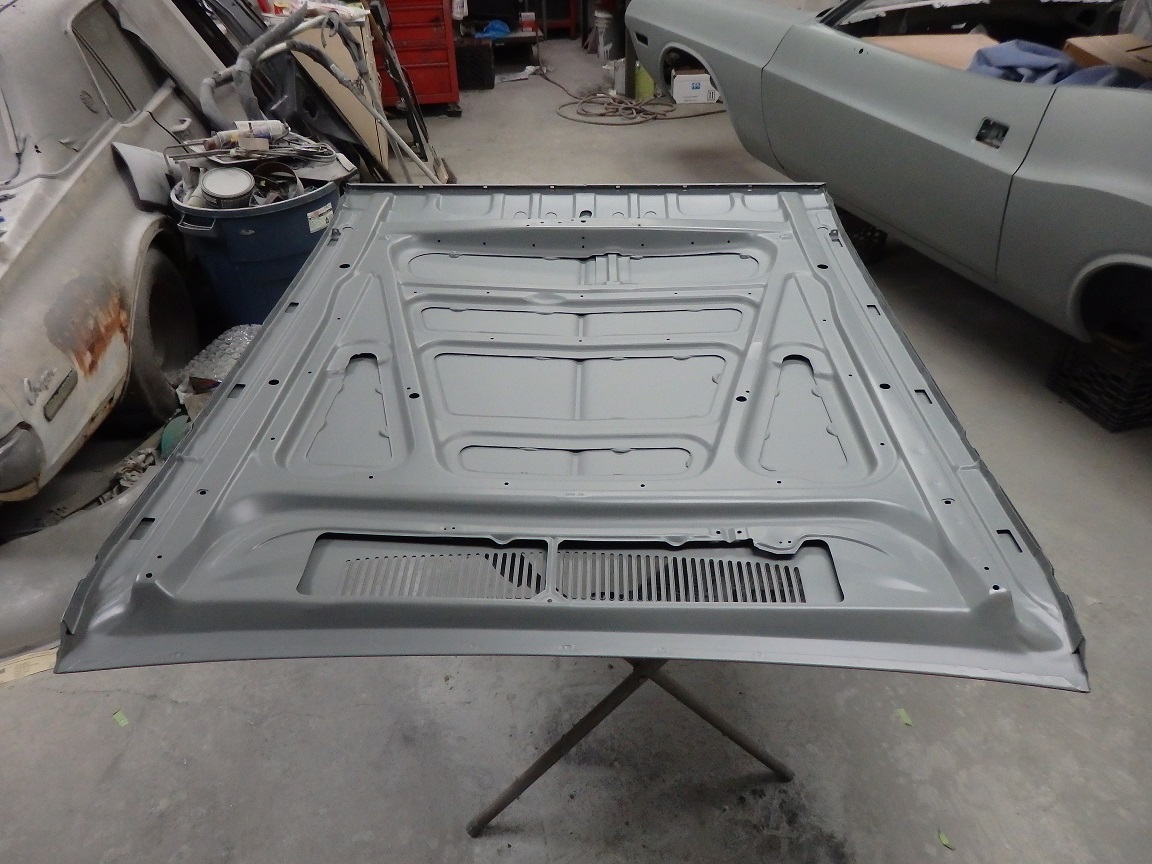 191) After a lot of vacuuming and blowing out the crevices, I gave it 3 coats of DP40LF Epoxy primer.
191) After a lot of vacuuming and blowing out the crevices, I gave it 3 coats of DP40LF Epoxy primer.
|
 192) The top side of the hood was chemically stripped with Aircraft Paint Stripper. I have yet to see a perfect hood. People who sit on their hoods create a lot of work for people down the road. Though this picture makes the hood look terrible, most of filler was not very thick. I could have skipped most of it and waited for the highbuild primer step to take out the imperfections.
192) The top side of the hood was chemically stripped with Aircraft Paint Stripper. I have yet to see a perfect hood. People who sit on their hoods create a lot of work for people down the road. Though this picture makes the hood look terrible, most of filler was not very thick. I could have skipped most of it and waited for the highbuild primer step to take out the imperfections.
|
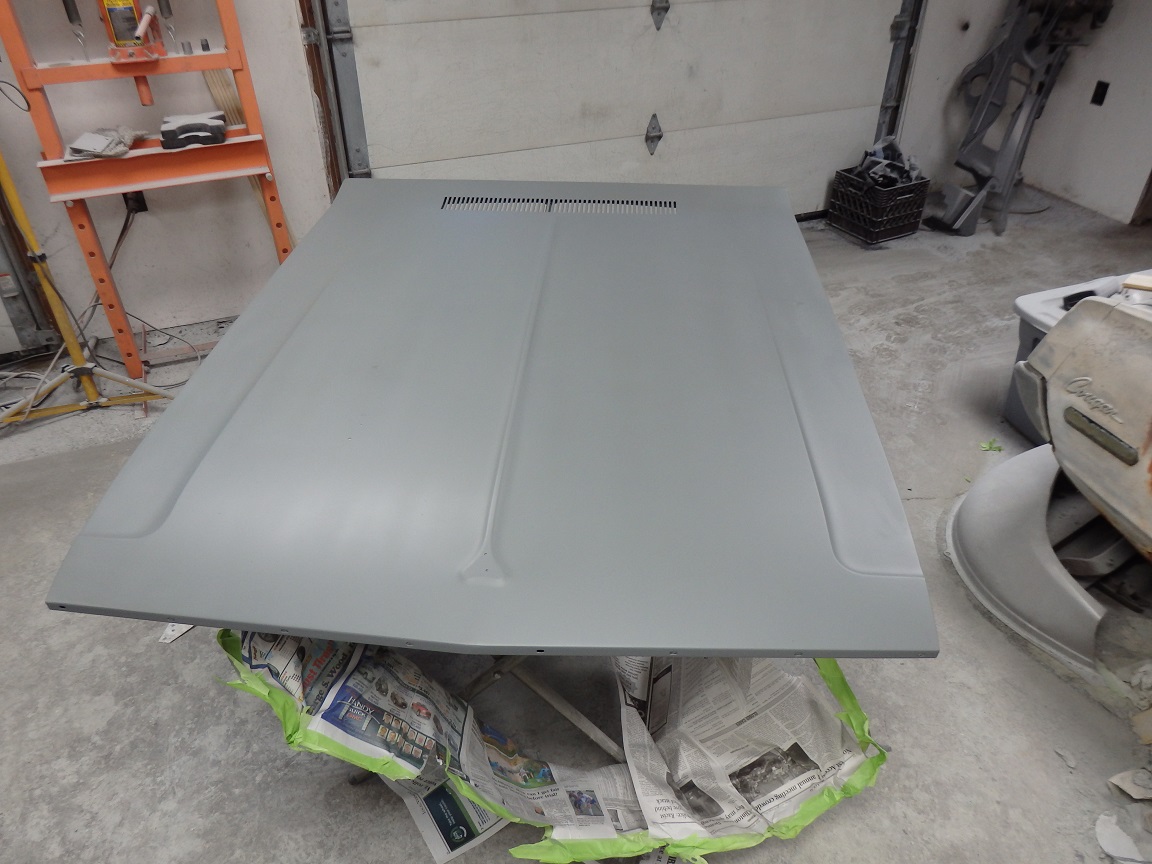 193) Here it is with 3 coats of DP40LF Epoxy primer and ready to install on the car. The hinges only needed to be sandblasted and primed. I removed the springs from the hinges primer to priming. I gave them 1 coat with the hinges closed and another coat with the hinges opened.
193) Here it is with 3 coats of DP40LF Epoxy primer and ready to install on the car. The hinges only needed to be sandblasted and primed. I removed the springs from the hinges primer to priming. I gave them 1 coat with the hinges closed and another coat with the hinges opened.
|
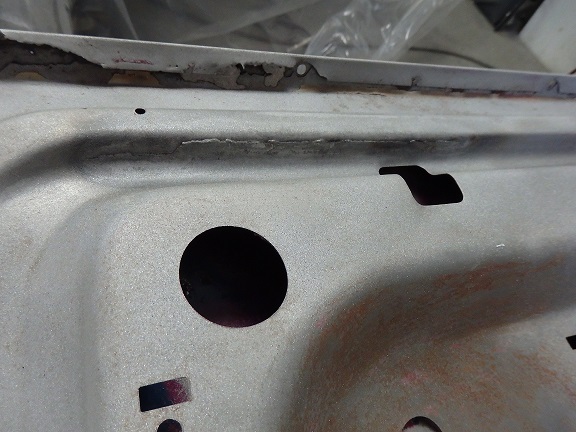 194) The trunklid needed a bit of work. The bottom seam was quite rusted on the underside and there was a factory "correction" that needed fixing. In this picture you can see an area, perhaps a foot long, where the metal was heated and folded. This was found under the original paint, which makes this a factory repair. It appears that there was a defect in the panel that they had to heat up and pound down to close the trunk lid all the way. This was easy for me to clean up. I just mig welded along the lenght of it and ground it down.
194) The trunklid needed a bit of work. The bottom seam was quite rusted on the underside and there was a factory "correction" that needed fixing. In this picture you can see an area, perhaps a foot long, where the metal was heated and folded. This was found under the original paint, which makes this a factory repair. It appears that there was a defect in the panel that they had to heat up and pound down to close the trunk lid all the way. This was easy for me to clean up. I just mig welded along the lenght of it and ground it down.
|
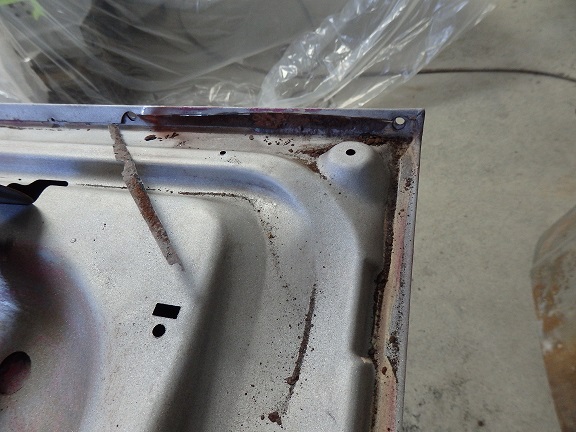 195) The seam repair took a bit of time. I cut the rusted sections out while leaving the original edge in place. In this picture I had cut off one piece. There were six pieces in all that needed repair. I sandlbasted the joint clean and welded in a new pieces that were shaped like the original pieces that were cut out.
195) The seam repair took a bit of time. I cut the rusted sections out while leaving the original edge in place. In this picture I had cut off one piece. There were six pieces in all that needed repair. I sandlbasted the joint clean and welded in a new pieces that were shaped like the original pieces that were cut out.
|
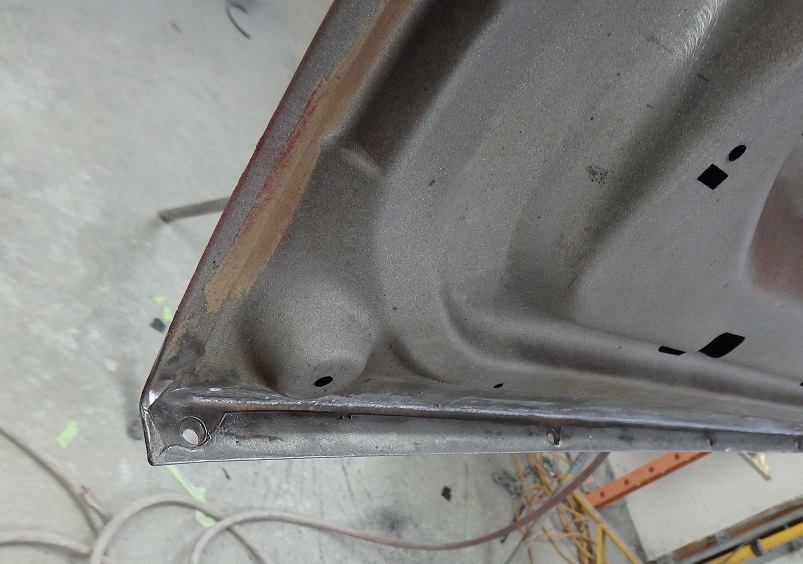 196) The new pieces were mig-welded in place and ground down flat. Here is a section all fixed. The seams were originally cover with seam sealer, which obviously failed. The plan here is to prime the trunklid so that the primer will seep into the cracks and then they seams will be retreated with seam sealer.
196) The new pieces were mig-welded in place and ground down flat. Here is a section all fixed. The seams were originally cover with seam sealer, which obviously failed. The plan here is to prime the trunklid so that the primer will seep into the cracks and then they seams will be retreated with seam sealer.
|
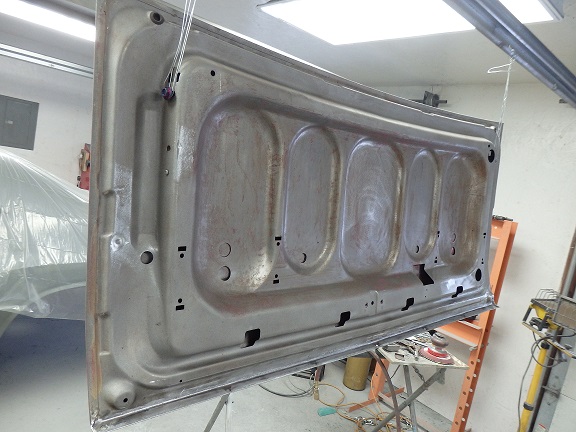 197) In this picture you can see the trunklid hung from the ceiling. This is how I performed all of the repairs on the underside. It was the best way to manage the seam repairs.
197) In this picture you can see the trunklid hung from the ceiling. This is how I performed all of the repairs on the underside. It was the best way to manage the seam repairs.
|